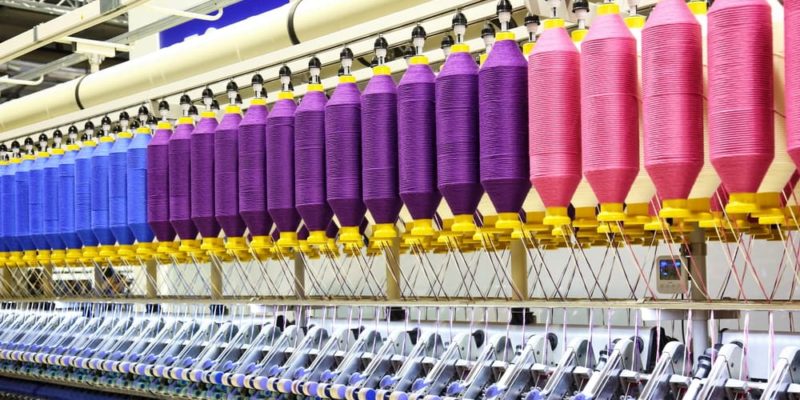The textile industry is a fundamental pillar of the global economy, ranging from garment production to industrial textiles. To maintain efficient production and ensure product quality, it is essential that the machinery used is kept in optimum condition. Regular cleaning and proper maintenance are vital to avoid breakdowns, prolong the life of equipment and ensure that end products meet the highest standards. In this article, we explore the keys to keeping machinery in the textile industry clean and operational.
Importance of cleanliness in the textile industry
The constant use of machinery in the textile industry makes it prone to accumulation of dust, fibres, oils and other debris that can affect its operation. Keeping machines clean is crucial to ensure efficiency and avoid problems that could disrupt production. In addition, a clean machine produces higher quality textiles, as dust particles and loose fibres can contaminate the fabric, causing defects in the final products. It is also important to note that waste build-up can lead to overheating in motors and other mechanical parts, which could lead to costly repairs and downtime.
Challenges in textile machinery cleaning
The cleaning of textile machinery presents several challenges due to the nature of the processes and materials involved. One of the main challenges is the accumulation of fibres and dust, which are constantly generated in textile facilities. These particles tend to deposit on critical machinery components, such as motors, gears and ventilation systems, which can compromise their performance.
Another common challenge is the build-up of oils and lubricants. Textile machines require lubrication to function properly, but this same lubrication can attract dust and fibres, forming a sticky layer that is difficult to remove. In addition, some internal parts of machines are difficult to access, which complicates cleaning and increases the risk of residue build-up in crucial areas.
Effective strategies for cleaning textile machinery
To keep machines in optimal condition, it is essential to implement cleaning strategies that address these specific challenges. Establishing a regular cleaning schedule is one of the best ways to prevent residue build-up. Areas where a large amount of dust and fibres are generated, such as carding and combing areas, require daily cleaning. On the other hand, deeper cleanings can be scheduled weekly or monthly, depending on the intensity of use of the machinery.
The choice of the right cleaning products is very important. It is essential to use products specifically formulated for the textile industry, capable of removing oil, grease and fibre residues without damaging mechanical parts. Industrial degreasers are essential for removing accumulated oils, while enzymatic cleaners are useful in areas where natural fibres are handled, helping to break down residues without the need for harsh chemicals.
In addition to manual cleaning, it is advisable to have dust extraction and filtration systems that control the accumulation of particles both in the working environment and on the machines. These systems help to keep the air clean and reduce the amount of dust deposited on surfaces, facilitating the maintenance of machines and prolonging their service life.
Preventive maintenance for textile machinery
Preventive maintenance is another essential aspect of ensuring the longevity and efficient operation of textile machinery. Regular inspections can detect early signs of wear or damage, helping to prevent serious failures and unexpected downtime. It is important to pay attention to key components such as motors, belts, gears and lubrication systems, ensuring they are kept in good condition.
Proper lubrication is crucial to reduce wear of mechanical components and prevent overheating. Following the manufacturer's recommendations for lubrication intervals and the types of lubricants to be used is essential to maintain optimum machine performance. In addition, regular cleaning of oil and grease residues is necessary to avoid build-up that could interfere with the operation of machinery.
Another important aspect of preventive maintenance is the timely replacement of worn parts. Identifying and replacing belts, bearings and seals before they fail can prevent further damage and keep machinery continuously operational.
Staff training in cleaning and maintenance
The success of any cleaning and maintenance programme depends to a large extent on staff training. It is essential that operators and maintenance personnel are well trained in best cleaning practices and in the use of appropriate products and equipment. Regular training ensures that staff are aware of the most effective techniques for maintaining machinery in optimum condition. In addition, a detailed procedures manual can serve as a reference for staff, ensuring that everyone follows the same methods in cleaning and maintaining machines.
Innovations in cleaning technology for the textile industry
Technology in the textile industry has advanced considerably, offering new tools and systems that make machine maintenance easier. Automated cleaning systems, for example, can be programmed to perform regular cleaning without the need for manual intervention, ensuring consistent and accurate cleaning. In addition, real-time monitoring systems make it possible to track machine performance and detect problems before they become serious failures, optimising the use of resources and improving operational efficiency.
Conclusion
Keeping machinery in optimal condition is essential for success in the textile industry. Regular cleaning, preventive maintenance and the use of advanced technologies are essential to ensure that machines run efficiently and produce high quality textiles. By following these strategies, textile companies can extend the life of their machinery, reduce downtime and ensure consistent performance, contributing to the overall success of the operation.
